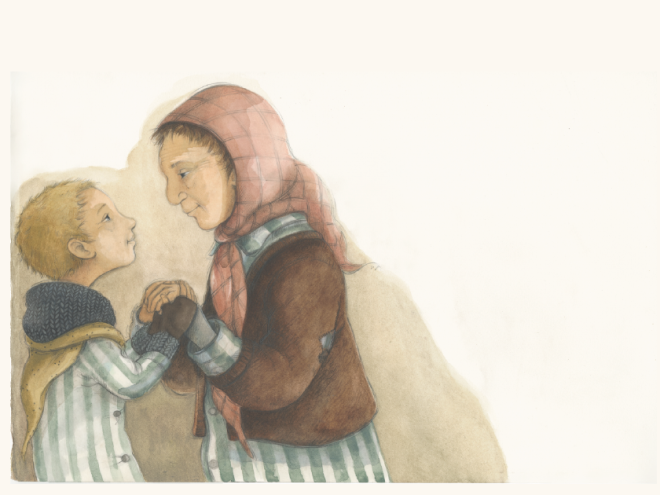Unlike most other Holocaust remembrance collections, these stories, essays, photographs, poems, and drawings have been collected and created by students of the 6th, 7th, and 8th grades from schools in North America and Europe. This is the culmination of a project supported by many classroom teachers. The editor, in a moving introduc- tion, hopes that the contributors and readers will “make a meaningful connection to the Holocaust” and will, by doing so, “…create a more peaceful future.”
Some of the student writers have been inspired by The Diary of Anne Frank. In their written pieces, they become Jewish teenagers who are hidden in attics and cellars and they describe the deprivation and the constant fear of discovery. One of the most disturbing essays is addressed to Anne to tell her that the hatred and discrimination she experienced are still present. Several selections use the first person voice to describe the horrors of being taken away in cattle cars and separated from loved ones. The young writers are deeply aware of the brutality of life in the work and extermination camps. One writer takes on the role of a child about to be gassed and describes how she struggles to breathe before death overcomes her.
A chapter titled “The Goodness of Some” tells about people who despite personal risks saved Jewish lives. In sharp contrast, some writers think about a Nazi who recalls his role in “harvesting” the Jews. There is mention of the role of luck in being able to survive. Toward the end of the book, we read about Nuremberg trials as well as Simon Wiesenthal’s lifelong pursuit of Nazis. There are deeply reflective essays about what we, as a society, can learn to help insure that nothing like this happens again.
These young writers and illustrators who “respond to the Holocaust” give us hope that through education the world can change. A glossary of terms and place names is ap- pended. Recommended for ages 10 and up.





